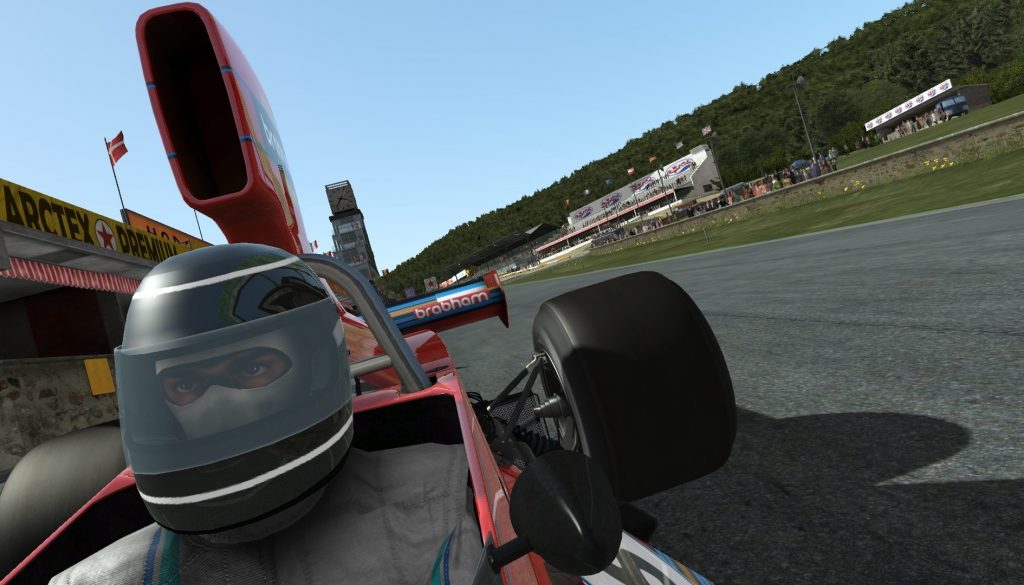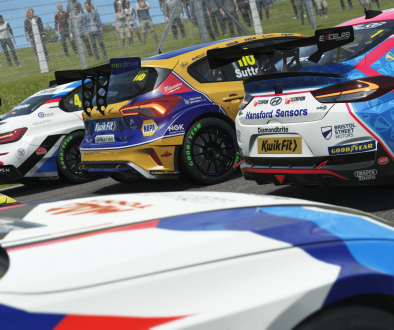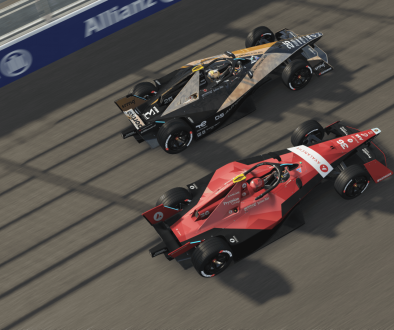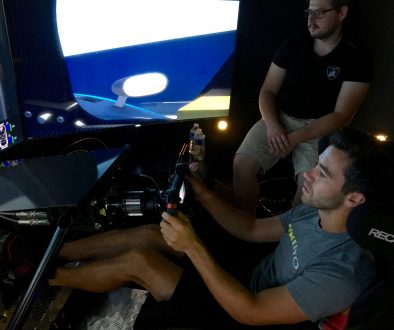A lot of talk has been generated recently about the new build, and the apparent physics changes. I’m going to try and keep this brief. Build 1098 should not influence any physical attributes unless that vehicle contains the new [Realtime] parameters in the .TGM file. I had a blind test when diffusive adhesion was implemented, and found no discernible difference, furthermore, tests made within +ttool gave identical results (within the tolerance of error). For those that don’t know, +ttool is basically a bench test for the tyres.
What are they, and what do they do?
As I said, I’d like to keep this brief and will come back to them when I finally get around to my TGM pieces. Let’s just start with diffusive adhesion. Diffusive adhesion is basically a time lapse form of adhesion/bonding to the ground. The parameters required to unlock the code are as follows:
StaticDiffusiveAdhesion=(<halftime>,<pressure>,<curve>) SlidingDiffusiveAdhesion=(<halftime>,<pressure>,<curve>)
The description for which, as given by our coder:
- <halftime>=Diffusive adhesion gains force on an asymptotic curve, so this defines the time at which we’ve achieved 50% of the maximum. You can make it effectively instant by using 0.0.
- <pressure>=The maximum adhesive force per unit area.
- <curve>=A value from 0.0-1.0 that says whether the maximum force is affected by the appropriate curve (StaticCurve or SlidingAdhesionCurve). 0.0=no effect, meaning it is always using the maximum force, 1.0=full effect, so maximum force only happens at optimum temperature (and sliding speed, in the case of sliding)
It will actually bond the tyre to the asphalt, requiring a slight upward force to detach it from the ground. This type of bonding is primarily why gravel or other debris stick to tyres after such an off-road excursion. High temperatures generally enhance this effect.
What about the “planar contact compliance”?
This replaced the old values of:
TemporaryBeltSpring BaseSpringPerUnitArea, or the even older TemporaryBristleSpring
With:
SpringConditions=(<gauge_pressure>,<carcass_temperature>,<rotation_squared>) // conditions under which the base spring values were calculated BeltSpringX=(<base>,<per_unit_pressure>,<per_unit_temperature>,<per_unit_rotation_squared>) BeltSpringZ=(<base>,<per_unit_pressure>,<per_unit_temperature>,<per_unit_rotation_squared>) TreadSpringXPerUnitArea=(<base>,<per_unit_pressure>,<per_unit_temperature>,<per_unit_rotation_square d>) // still per unit area, BTW TreadSpringZPerUnitArea=(<base>,<per_unit_pressure>,<per_unit_temperature>,<per_unit_rotation_square d>) // still per unit area, BTW
The “old” variables you were only providing the <base>. So, essentially you can get it to behave the same, by copying the old values. <TemporaryBeltSpring1> can be used into <BeltSpringX1>, <TemporaryBeltSpring2>, can be used in position <BeltSpringZ1>, assuming the remaining values are set to 0.0, the tyres will behave the same as previously.
For BaseSpringPerUnitArea, <BaseSpringPerUnitArea1> = <TreadSpringXPerUnitArea1> & <BaseSpringPerUnitArea3> = <TreadSpringZPerUnitArea1>. However, I will tease a bit now by saying that I have a spreadsheet that will feeds data into +ttool to help you determine reasonable values to use here. I will not be releasing it today, however, so you’ll have to stay tuned to this blog .
I will end on a bombshell, by revealing that the “planar contact compliance” was actually first available in B1084. Information concerning the new feature was withheld because we were not quite sure if we wanted to go with this method. In the end this appeared to produce the best correlation vs performance. This feature has only been used on the 3PA Watson Roadster so far. It allows greater accuracy of the lateral and longitudinal bristle compliance with changes in temperature, rotation speed, and tyre pressures.




